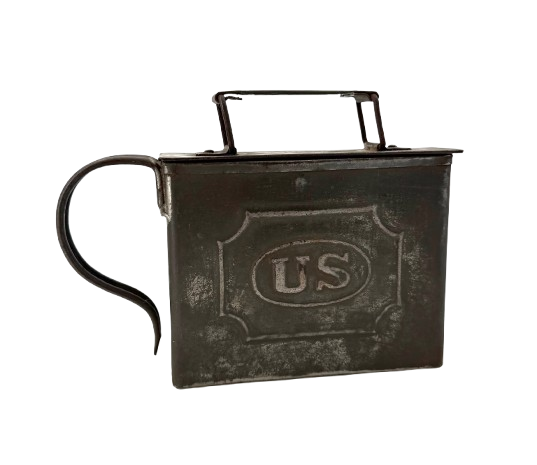Tinned Triumph: Early Food Technology in the U.S. Army
Indian Wars Standard Issue 1872 Meat Can
The 1870s marked a pivotal era in United States military logistics, particularly in the provisioning of field rations during prolonged campaigns across the Western frontier. One significant development was the introduction of the first standardized U.S. Army meat can in 1872, a relatively modest yet revolutionary tool that enhanced the effectiveness, health, and morale of soldiers during the Indian Wars. This article examines the context, design, and impact of this early military innovation.
As the United States Army engaged in a series of protracted conflicts with Indigenous nations in the American West, collectively known as the Indian Wars (circa 1865–1891), logistical challenges became increasingly apparent. Harsh terrain, extended supply lines, and unpredictable combat conditions required new approaches to soldier sustenance. By 1872, the Army recognized the need for a more practical and durable way to provide hot meals in the field—leading to the introduction of the first standardized meat can.
Prior to the 1870s, U.S. soldiers relied heavily on hardtack, salted meats, and dried legumes—rations that were difficult to transport and prepare, often leading to poor nutrition and decreased morale. Cooking in the field was cumbersome, typically involving open fires and improvised utensils. The Army’s supply chain struggled to adapt to the mobility required during the Indian Wars, especially across the Great Plains and mountainous terrain.
The 1872 meat can was made of tinned iron or stamped sheet metal, designed to serve both as a cooking pot and an eating vessel. It typically came with a handle and was part of the broader "Haversack Ration" system developed for mobile troops.
Key features included:
Durability: The tin construction with a soldered lid helped preserve cooked meat and withstand harsh conditions.
Portability: Compact and lightweight, it could be easily carried in a soldier’s haversack.
Versatility: The can could be placed directly over a fire for heating or cooking rations such as salt pork, beef, or beans.
This meat can is considered a precursor to later standardized mess kits and MREs (Meals, Ready-to-Eat), marking the first time the Army issued an individual ration utensil specifically suited for meat preparation and consumption.
Soldiers in campaigns such as those against the Comanche, Apache, and Sioux tribes often operated far from established supply depots. The meat can enabled troops to heat and consume rations with minimal setup, reducing the time spent cooking and increasing operational readiness. While rudimentary by today’s standards, it offered a major improvement in terms of hygiene, nutrition, and efficiency.
Reports from quartermasters and officers noted that the cans were generally well-received, though complaints about rusting and difficult cleaning were common. Nevertheless, the Army's decision to issue the meat can in 1872 reflected a growing awareness of the importance of soldier welfare in achieving military success.
The 1872 meat can set the stage for future advancements in military ration systems. By the late 19th century, more sophisticated mess kits and canned rations would become standard. During World War I, the U.S. Army further refined the individual mess kit, incorporating lessons learned from the frontier era.
The Indian Wars, while controversial in their political and ethical implications, were a crucible for many logistical innovations in U.S. military history. The meat can of 1872 stands as a small but notable milestone in the evolution of field equipment and soldier care.


